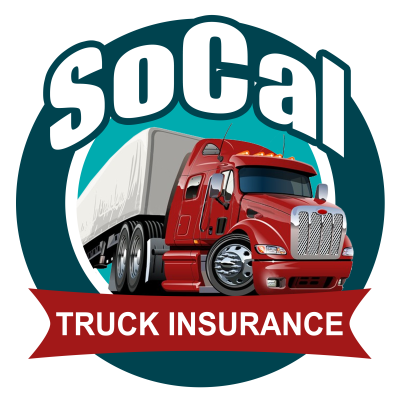
Key Takeaways:
Commercial truck insurance discounts are price reductions that insurance companies offer to lower your insurance premiums based on safety features, operational practices, and risk factors. Insurance providers evaluate your driving record, claims history, and risk profile to determine eligibility.
Discounts matter more than ever. Commercial truck insurance premiums reached $0.102 per mile in 2024—a 47% increase from $0.059 per mile in 2014. This cost surge impacts every trucking operation, from owner-operators with single vehicles to large fleets managing hundreds of trucks.
The good news: carriers implementing five or more insurance discount categories can achieve 25-40% total savings versus baseline insurance policies. Most insurance agents won't automatically apply every discount you qualify for. Small fleets especially miss opportunities because trucking insurance companies rarely advertise all available savings. You must know what to ask for.
Understanding commercial auto insurance discounts and properly documenting your qualifications through certificates of insurance and fleet management records is essential. The transportation industry's rising costs make these savings critical to maintaining profitability.
Your driving record directly impacts insurance premiums. Insurance providers reward safe drivers and penalize risky behavior. Fleet management systems and driver motor vehicle records determine eligibility for these discounts across all fleet vehicles.
Insurance companies evaluate your claims history and violations over a three-year lookback period. Clean records reduce your risk profile; violations increase insurance premiums significantly.
| Violation Type | Premium Impact |
| Minor violations (speeding <15 mph over) | +5-10% increase |
| Major violations (reckless driving, DUI) | +30-50% surcharge or policy declination |
| At-fault accidents | +15-25% per incident (3-year lookback) |
| Loss-Free discount | 5-10% savings for 3+ years accident-free |
Insurance agents review driver motor vehicle records before issuing commercial auto insurance policies. One DUI can disqualify drivers entirely. Maintaining clean records across all fleet vehicles is essential for fleet insurance coverage eligibility.
Professional driver training reduces your risk profile and qualifies you for insurance premium discounts. PTDI (Professional Truck Driver Institute) certified programs and Smith360® certification earn 3-10% discounts from most insurance providers. These programs teach defensive driving techniques that reduce collision damage and bodily injury claims.
CDL (Commercial Driver's License) holders may save approximately 25% compared to non-certified drivers. Insurance companies view CDL certification as proof of competency in operating motor vehicles safely. Document all training certificates when requesting quotes from insurance agents. Many trucking insurance companies require this documentation for fleet insurance policies covering multiple drivers across small fleets and large fleets alike.
Telematics solutions and safety equipment reduce insurance premiums by proving safer operations. Insurance providers track real-time data through electronic logging devices (ELDs), dashcams, and GPS systems. These tools lower your risk profile by documenting driver behavior and preventing collision damage.
ELDs automatically record driving hours and safety metrics. Insurance companies offer substantial fleet discounts when you share this data because it demonstrates compliance and reduces collision coverage claims.
| ELD Program | Discount Structure |
| Non-preferred ELDs | 3% discount |
| Average first-year savings | $1,056 for new customers |
| Sentry + Motive partnership | Preferred vendor partnerships | Up to 5% with combined ELD + dashcam data sharing |
The discount increases at renewal based on accumulated safety data. Insurance agents verify ELD compliance through your certificate of insurance and fleet management reports. Preferred vendor partnerships provide higher savings because insurance providers receive standardized telematics solutions data. New fleet insurance policies with ELD integration typically see lower insurance premiums immediately, with additional reductions after proving safe operations over 12 months.
Safety and security equipment protects against physical damage and theft while reducing insurance premiums:
Trucking insurance companies require documentation of installed equipment before applying discounts. Submit installation receipts and equipment specifications to insurance agents when requesting fleet insurance coverage quotes for motor vehicles.
How you pay and structure insurance policies affects your insurance premiums. Insurance providers reward upfront payments and bundled coverage because both reduce administrative costs and improve customer retention. These discounts apply across all vehicle types and fleet sizes.
Paying your annual premium upfront saves 13-15% compared to monthly installments. On a $10,000 commercial auto insurance policy, that's $1,300 in savings. Insurance companies also waive monthly billing fees of $10-25, adding another $120-300 annually.
Most insurance providers offer financing at 8-12% APR for monthly payments. Paying in full eliminates these interest charges entirely. Small fleets and owner-operators with strong cash flow benefit most. If liquidity is tight, electronic funds transfer (EFT) or automatic ACH payments still earn 1-2% discounts while spreading costs across 12 months. Insurance agents can structure payment plans through your fleet insurance policy to balance savings against cash flow needs.
What is the Multi-Policy Bundling Discount?
Bundling multiple insurance policies with one insurance company reduces premiums across all coverage types. Insurance providers reward consolidated business with substantial fleet discounts.
Most carriers offer 5-15% savings when you bundle multiple policies:
The exact discount varies by insurance provider, but the principle remains consistent—consolidating your coverage with one carrier always costs less than splitting policies across multiple companies.
Bundling also simplifies fleet management. Single renewal dates, unified certificates of insurance, and one point of contact with insurance agents reduce administrative burden. Composite-rated policies covering liability protection, physical damage coverage, and comprehensive coverage under one umbrella insurance structure maximize savings. Large fleets with diverse insurance needs (cargo vans, food trucks, construction vehicles) save most through bundling. Insurance companies offer better liability limits and coverage amounts when you consolidate all motor vehicle liability insurance with one provider.
Operating history and geographic coverage area directly impact insurance premiums. Insurance providers assess risk based on how long you've operated and how far your fleet vehicles travel. Established businesses with limited operating radius pay significantly less than new carriers running long-haul routes.
Insurance companies reward longevity and scale. Carriers with 3+ years in business qualify for business experience discounts because established operations demonstrate lower risk profiles. Your claims history over this period proves operational competency to insurance agents.
Fleet size creates dramatic premium differences. Carriers with 20+ units receive 10-15% fleet discounts automatically. Small fleets (1-5 trucks) pay three times more per mile than large fleets (50+ units) for identical commercial auto insurance coverage. This disparity exists because insurance providers spread risk across more vehicles in large fleets, while small fleets represent concentrated exposure. Owner-operators and small fleet operations face the highest per-vehicle insurance premiums in the transportation industry. Delivery companies, livery services, and specialized operators with cargo vans or food trucks struggle most with these rate structures. Bundling multiple insurance policies and documenting clean driver motor vehicle records helps offset the fleet size penalty.
Operating radius is the distance your motor vehicles travel from home base. Insurance companies charge dramatically different rates based on this metric. Carriers switching from over-the-road (OTR, 500+ miles) to regional or local operations saved 15%+ on fleet insurance premiums.
Local operations (0-50 miles) are rated 40-60% lower than long-haul routes. Why? Shorter trips mean less highway exposure, fewer fatigue-related accidents, and lower collision damage severity. Insurance providers view local delivery companies and regional haulers as substantially safer risk profiles than cross-country trucking operations. If your actual operations changed but your fleet insurance policy still lists OTR radius, you're overpaying. Insurance agents require updated certificates of insurance reflecting an accurate operating radius. Many trucking insurance companies now cross-check electronic logging device (ELD) data against stated radius during audits. Mismatches trigger premium adjustments or policy cancellations. Review your operating patterns quarterly through fleet management systems and update insurance policies accordingly for maximum savings.
Most insurance agents won't automatically apply every discount you qualify for. Proactive documentation and strategic timing determine whether you capture maximum savings on insurance premiums. Small fleets especially miss opportunities because trucking insurance companies rarely volunteer all available fleet discounts.
What Documentation Do You Need to Qualify for Discounts?
Insurance providers require proof of safety measures and equipment before reducing insurance premiums. Gather these documents before requesting quotes:
Organize documentation in your fleet management system for quick access when shopping for commercial truck insurance policies.
Timing matters. Start shopping 90 days before renewal if your increase exceeds 10%. Market average increases were 5.8% in Q1 2025, so anything above 10% means your insurance company is pricing you out. Request competing quotes from multiple insurance providers immediately.
Review your fleet insurance policy whenever your credit score increases by 50-100 points within 12 months. Credit improvements lower your risk profile, but insurance agents won't automatically re-rate existing policies. You must request reassessment or shop with competitors who'll price your current credit standing. Also review after major operational improvements—new telematics solutions implementation, fleet safety plan adoption, or driver training program completion. Most carriers don't proactively offer discounts even when you qualify.
The transportation industry standard is reactive pricing. If you don't ask for specific fleet discounts on comprehensive coverage, collision coverage, physical damage coverage, and liability protection, you won't receive them. Small fleets and owner-operators lose thousands annually by assuming insurance premiums are fixed. Challenge every renewal with documentation of your improved risk management services and demand applicable savings on all motor vehicles in your fleet.
Don't leave money on the table. Most trucking operations qualify for multiple discounts but never receive them because insurance agents don't volunteer savings.
Socal Truck Insurance specializes in maximizing fleet discounts for owner-operators and fleet managers. We document every qualification—from ELD integration to driver training certificates—ensuring you capture every available discount on commercial auto insurance policies.
Get a comprehensive quote comparing coverage across multiple insurance providers. We'll review your driving record, claims history, and fleet management practices to identify 5+ discount categories that reduce insurance premiums by 25-40%.
Call Socal Truck Insurance today or request a quote online. Stop overpaying for fleet insurance coverage.
